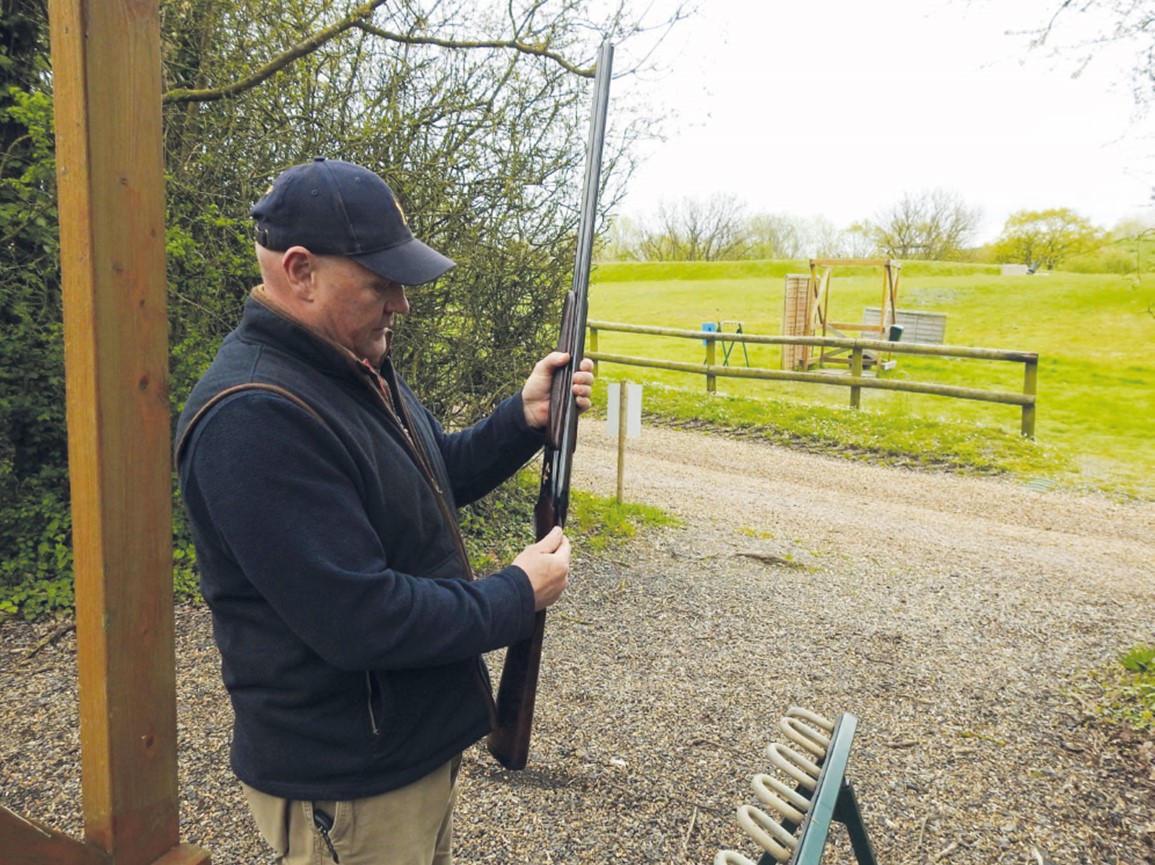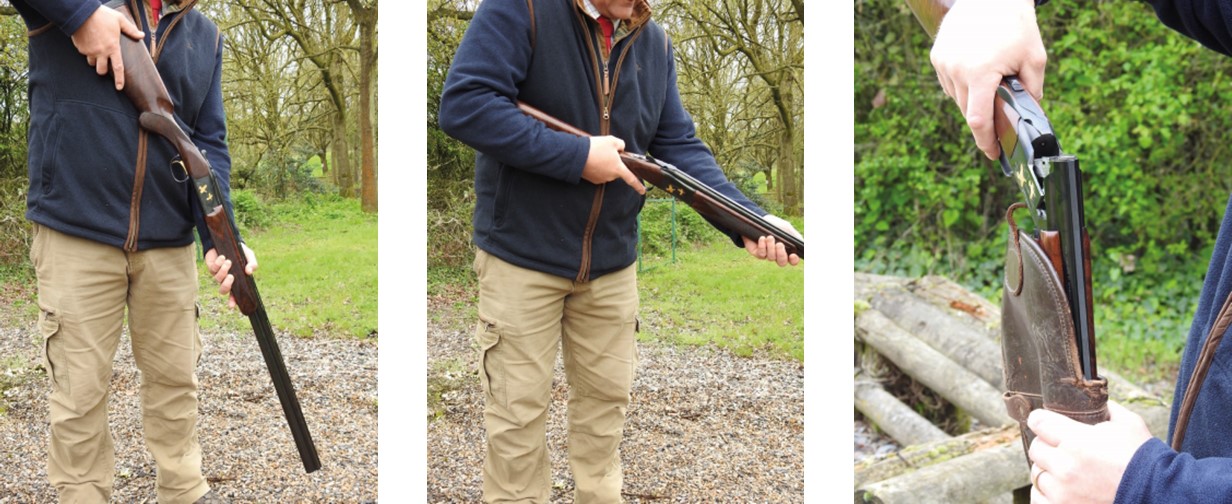In the first of a series of articles, Mark Heath dives into the safety-critical subjects of gun etiquette and muzzle awareness
Why on earth would anyone want to play golf? I have no idea to be brutally honest.
It has never attracted me and I have never played a round other than crazy golf when my children were young. Nevertheless it could be argued that shooting and golf are very similar in many respects and I have been a shooting addict to varying degrees since my teenage years. Both sports can be social as well as competitive, and can be individual or team- based. Both have a handicap or class system for competitions. But unlike golf, shooting has very little appeal to television audiences.
Clay shooting is often referred to as golf with a gun – and for good reason. The skills for both sports are similar, with stance, posture, focus and hand-eye coordination all critical elements. If you’re a kit monster who loves their gear, both sports can easily satisfy your craving in so many ways. Another great similarity between the two sports is that once you start either you will more than likely be addicted.
One critical difference between the two sports is the safety requirements for shooting unless of course your golf swing is particularly flamboyant. So before we get into the nuts and bolts of how to shoot, let’s talk about safety. It doesn’t matter whether you are clay or game shooting, safety is essential. It’s all fine until isn’t and then it’s too late. Prevention is the best approach.
I often see behaviours in experienced shooters that make me wince a little and they are often simple things, such as putting a gun together and closing the barrels only to find that its pointing at somebody in the room, unsafely removing a gun from a slip, or perhaps incorrect use of the safety catch. Picking up a closed gun up a gun rack and levelling it before opening it is another thing that is often seen.
The above issues can be collected under the heading of muzzle awareness; in my head its safety and good manners at the same time. The processes to keep you and everyone else safe are very straightforward.
For gun assembly, put the barrels onto the action and close towards the ground. Put the for-end on and open the gun.
Taking a gun in and out of a slip correctly to avoid a loaded gun going into a slip in a moment of excitement is a critical part of gun safety. To remove a gun from the slip, take it out halfway, hold the gun through the slip and open the gun. Reverse the process when putting the gun in the slip. By following this process, the first and last thing you see is an empty gun. In addition I often see shooters tripping the light fantastic trying to take a gun out of a slip without pointing it dangerously – but with a closed gun. Following the above procedure avoids all that drama.
 Pick it up vertically and open it vertically
Pick it up vertically and open it vertically
When putting a gun in a rack it is normally easy to stand it in the rack open so that everyone knows that it’s safe. If it’s pouring with rain you may wish to close it. To remove it safely from the rack, pick it up vertically and open it vertically, that way your fellow shooters are not going to hit the deck – or perhaps just give you some forthright and well-deserved feedback.
Most shooters imagine themselves to be safe, but their actions do not always support their own perception. A common example is when closing a gun it is gun slammed shut, sometimes in frustration at the miss of a target or perhaps as a determined approach to the next pair.
I can recall three instances over the past 13 years of guns discharging on closing at the shooting school. None were as a result of fingers on triggers; they were all from gun defects, sometimes due in part to a lack of servicing. Fortunately, because of the processes that my instructors follow, all went into the ground about 12ft from the shooter. The old way of closing a gun, known as wood to metal in its most exaggerated form, can result in the gun closing with the barrels pointing directly at the shooter’s foot. Unwanted consequences could leave someone feeling rather limp.
 If this goes off, at best you will be covered in muck and shaken up. At worst, no foot.
If this goes off, at best you will be covered in muck and shaken up. At worst, no foot.
A much better angle for closing. If it goes off, everyone is safe.
Removing and replacing in a gunslip safely. The first and last thing you see are the empty barrels.
We teach shooters to close the gun calmly by pushing the barrels towards the action while they are pointed at the ground just away from the shooter. This is especially important for game shooters with the beating line walking towards them.
Use of the safety catch doesn’t normally come into play for clay shooters, as the gun should only be closed in a safe direction when in the stand, immediately prior to calling for targets. Game shooters should use the safety catch and release it prior to shooting while the barrels are pointed upwards, and then reapply it before bringing the gun down – potentially through the beating line – for reloading. This reduces the risk of an accident if only one barrel has been fired. When double gunning, the safety catch should always be applied before handing a gun to your loader and it should be handed back to the shooter the same way.
I apologise if I am preaching to the converted with this article, but observations suggest it will be a useful reminder to some experienced shooters in addition to providing a learning opportunity for novices or those thinking of taking up shooting.
Next month we will look at how to hold and mount a gun correctly to avoid bruising to the jaw, middle finger and shoulder areas. These are all issues we pick up on regularly and are easily avoidable.
CONTACTS
West London Shooting School (WLSS) is the UK’s oldest independent shooting school and has been offering expert tuition and gun fitting for over a century in beautiful surroundings a mere 12 miles from London’s West End.
With over 100 traps and stands in superbly laid out grounds, the school teaches every possible variation of game and clay shooting to all standards of shot.
Mark Heath has worked at the school since 2010 and leads the team, as head instructor and general manager.
As one of WLSS’s main gun fitters, Mark is in demand from all the major manufacturers. He started shooting at the age of 12 and went on to be a regular member of the England and Great Britain police teams. A keen game, clay and rifle shot, he enjoys all forms of shooting.
Web: www.wlss1901.co.uk
Tel: 020 8845 1377
Email: reception@wlss1901.co.uk
Instagram: @shootingschool
Facebook: @westlondonshootingschool